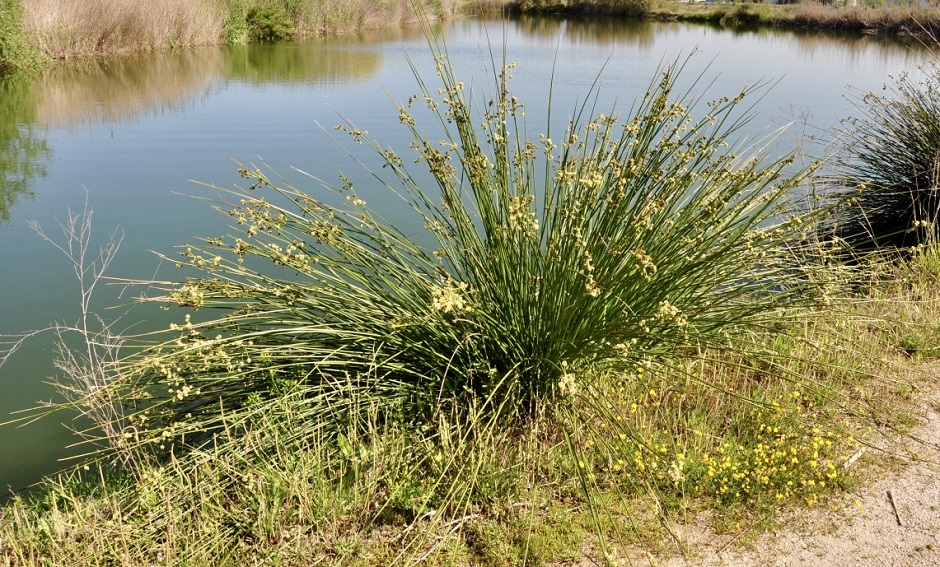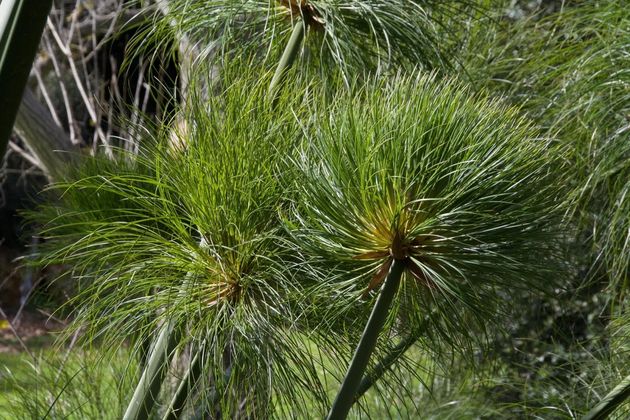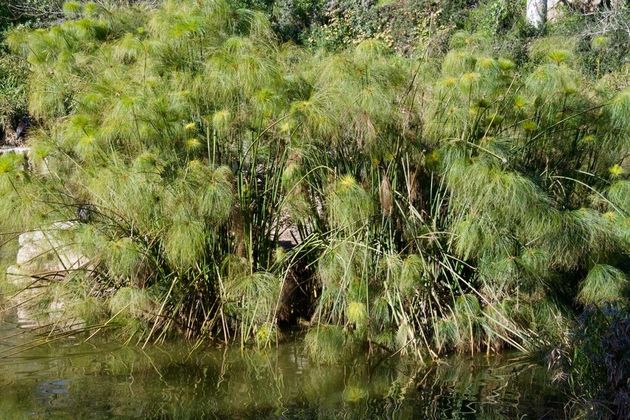When she could hide him no longer, she got a papyrus basket for him and coated it with tar and pitch. Then she placed the child in it and put it among the reeds along the bank of the Nile. Exodus 2:3
 Photo: Antonio Cruz
Photo: Antonio Cruz
But when she could hide him no longer, she got a papyrus basket for him and coated it with tar and pitch. Then she placed the child in it and put it among the reeds along the bank of the Nile.
(Exodus 2 v 3)
There are three Hebrew words which are translated as “reed”, even though they probably correspond to different vegetal species. The first is agmón, and refers to a plant with many long, thin, upright, cylindrical stems, all joined to each other at the base, which grows on the banks of rivers or freshwater reservoirs.
It is the typical bulrush that belongs to the juncaceae family, which comprises many well-known species. Some of the most abundant of them in Israel include the Juncus acutus, J. maritimus, J. articulatus, etc. The Bible uses this plant as a symbol of fragility and humiliation (Is. 58 vv 5-6), or meagreness or insignificance (Is. 9 vv 14-15).

[photo_footer] Photo: Antonio Cruz[/photo_footer]
The second Biblical term, also translated as “reed”, is gomé, which comes from gamá, meaning “to drink”, as it is porous and absorbs water. This is a larger plant than the one referred to above, which also grows on river banks, and from whose thick stems the basket which saved Moses’ life when he was a baby was made (Exodus 2 v 3). It was also the material from which other larger boats, used for seafaring, were made (Isaiah 18 v 2), as well as sandals and other everyday objects.
This is the famous Egyptian papyrus (Cyperus papyrus) from which paper-like laminae were developed for writing purposes. In ancient times these papyrus reeds were abundant on the banks of the Nile, but nowadays they are virtually non-existent. However, this plant does survive around the Sea of Galilee and other wetlands in Israel. The stems of this plant are triangular in shape, and at their upper end have thin leaves spreading out in star-like fashion. The Hebrew term gomé was translated into Greek as pápyros, (Job 8 v 11); biblos (Isaiiah 18 v 2) and elos (Isaiah 35 v 7).

[photo_footer] Photo: Antonio Cruz[/photo_footer]
The third Hebrew term in the Old Testament which has sometimes been translated as “reed” is suph (Isaiah 19 v 6), although in fact it would better be rendered “bulrush”.

[photo_footer] Photo: Antonio Cruz[/photo_footer] In his commentary on the words “blot out my transgressions” in Psalm 51 v 1, the 19th century English theologian Adam Clarke, wrote the following:
“This term relates to the idea of imputation or formal accusation, the weight of which the psalmist knew all too well. Consequently, he pleads guilty to all the charges levelled against him, but at the same time he requests that the written statement of accusation be spoiled; that liquid be spilled on the papyrus so that the ink would be rendered illegible, and completely erased, so that no record of the charges against him would remain. And this is something that only the mercy, compassion, goodness and grace of God can effect.” [1]
This is what the blood of Christ definitively achieves.
[1] Spurgeon, C. H., The Treasury of David.

Las opiniones vertidas por nuestros colaboradores se realizan a nivel personal, pudiendo coincidir o no con la postura de la dirección de Protestante Digital.
Si quieres comentar o